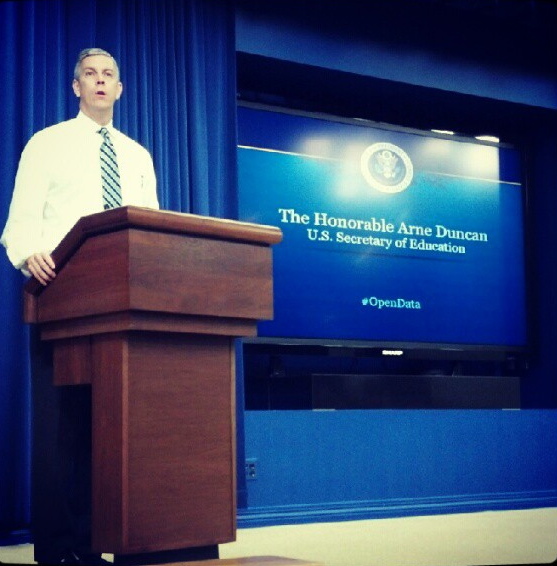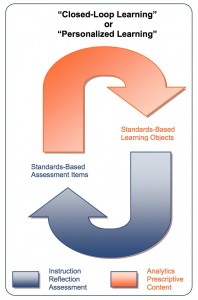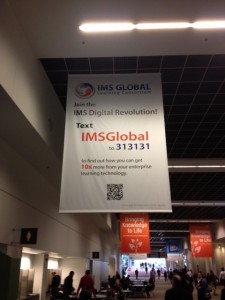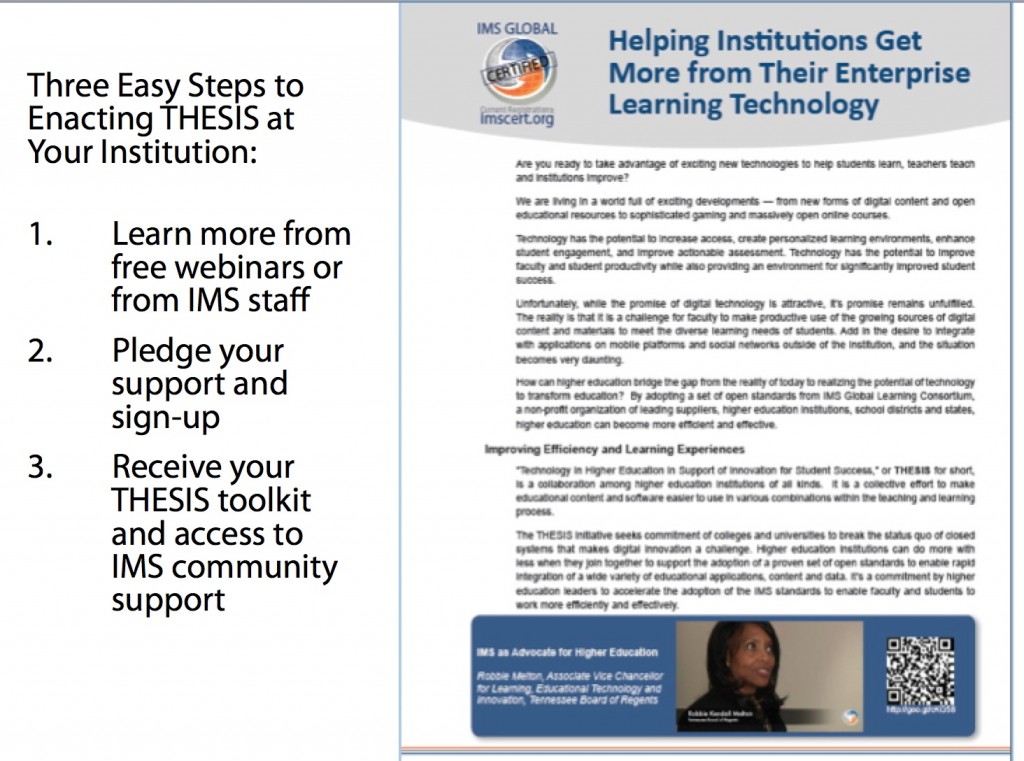Is educational data boring? You might think so.
But, after attending the White House/U.S. Department of Education DataPalooza event held this week (October 9, 2012) I’ll have to say that I’m a believer in the role data can play in enabling educational innovation. And for governments around the world wanting to encourage positive educational change, you need to consider the important and potentially transformational role data can play.
The event featured a morning of stellar presentations from a mix of government officials (including U.S. Secretary of Education Arne Duncan and MC’d by U.S. Chief Technology Officer Todd Park), entrepreneurs and well-established education suppliers.

U.S. Secretary of Education Arne Duncan at the Education DataPalooza 10/09/2012
Organizations that presented included Gallup Education, Agilix, EverFi, Georgia Department of Education, eScholar,Personal, Utah Education Network, Pearson, York County Schools Virginia, Alltuition, Rezolve, BecomeAlum, Knewton, U.S. Federal Communications Commission, Education Superhighway, Mozilla Foundation, and The Manufacturing Institute.
Having interacted with the U.S. Department of Education under the Obama administration for several years now, I have to say that I have been impressed with their ability to bring together leaders and encourage change. This was about as good of a ½ day of thought leader presentations – highlighting real emerging practice – as I have attended anywhere at any time. There is absolutely no doubt in my mind that this initiative represents the future of U.S. education innovation.
I’d like to detail some of what occurred, in terms of content covered and then relate it to our work in the 1EdTech Consortium.
The Education Open Data Initiative is similar to U.S. government led initiatives in other segments. The major thrust of these initiatives is that people can make better decisions and be served better if they have ready access to “their data” accumulated over a life time. It’s common sense that a patient can make better decisions and receive better care if their medical history is readily available. Same with education. Seems like a "no-brainer."
Secretary of Education Arne Duncan (recently returning from a “Back-to-School Bus Tour”) kicked things off by challenging the audience to leverage data as a potential “game changer” for U.S. education. U.S. ED is doing more than just talking about this – they are actively encouraging it with initiatives like the MyData button, which encourages institutions and suppliers to make personal data (regarding educational achievements) available to educational consumers.
Of course, rarely is data by itself that useful. It’s the information – actionable information – that is derived from the data – that is what tends to be most useful. So, for instance, using the medical analogy, an x-ray or MRI provide good sources of data for some issues – but both need to be interpreted by a specialist to get the most useful information out of them.
As such, many of the presentations featured applications that use the data, as opposed to the data itself. Where can “data” help the educational process and student success? Here were some of the key areas highlighted at the Education DataPalooza:
- Better understanding student interests, progress and productivity in K-12 in order to provide them with the right help at the right time, including helping them focus on their strengths
- Helping students connect their interests and curriculum to their career interests, even at a relatively young age
- Scaling personalized attention to students (data collection, and perhaps analysis, needs to be automated or semi-automated to help teachers help more students) and allowing them to work at their own pace
- Helping students make the right choice in selecting a college that fits their interests, background and budget.
- Helping reduce the time and effort required to apply for financial aid and college acceptance
- Helping with the movement of students within and across states and between colleges
- Enabling the finding of appropriate learning resources (using metadata) available throughout the web
- Enabling adaptive testing and creation of unique syllabus / learning plan for every student
- Understanding school Internet connectivity issues so they can be addressed
- Helping students connect their interests and curriculum to their career to job placement
- Enabling “badges” or “competency-based” learning credentials to either supplement or replace traditional college credit – especially with respect to skills that help with obtaining employment
Wow! Feeling a bit overwhelmed? Data is nothing less than the future of education. Which is what made this event so powerful and interesting!
Of course, as Karen Cator (Director of the Office of Educational Technology) pointed out, there is no single magic bullet in improving education, whether it be technology, data, or anything else. And, one of the most poignant comments came from Jim Shelton (Assistant Deputy Secretary for Innovation and Improvement) who stated that while the event was excellent, that the key element to success will be what happens after the event in terms of industry really working together to create a movement of transformation.
What does all this mean for the work of 1EdTech and technical interoperability standards? Well, at first glance it is a complete no-brainer that many of the data connections required to achieve the above goals will be a lot lower cost and easier to make happen if they are based on standards.
Of course, every supplier has “open APIs” – and sometimes they will even refer to same as “open standards.”
But, the value of a “standard” is that it provides the predominant way to do something – when a standard predominates, it takes cost and complexity out of the market –and those resources can be spent on other things – like innovation.
So, if there is a single, or a few, dominant platform providers, then, yes, they can claim their approach is a standard. In such cases you see the “platform wars” that we are seeing now with Google, Amazon and Apple. But, if you want many suppliers to be able to participate with low barriers to entry – as is absolutely essential in education – then the only viable route are standards at the core of the industry that are evolved and maintained by industry.
So, when a company – say company xyz - says that anyone can access the data out of their platform based on an open standard – well, that is misleading. If xyz wanted to get their approach accepted as an industry standard they could easily work with standards consortia like 1EdTech to do that – and in so doing would relinquish control to the market.
But, should xyz do that?
This is of course an age old (if the technology industry can be considered “age old”) question that has sprung up many times in the past with programming languages like Java, document formats like PDF, and so forth. When does it make sense for industry to truly cooperate on data exchange? I’m sure if there was a panel of experts at a conference on this question there would be a very robust debate. My answer would be pretty straightforward:
When a critical mass of market leaders believe that there is more “opportunity” for them if they cooperate versus if they don’t, then they will cooperate.
I put the word opportunity in quotes because in industries like education opportunity does not simply equal more revenue, but also includes institutions themselves being more responsive to their mission. Will they cooperate via a standards consortium? Yes if the consortium is responsive to the needs of the market. No if it is not.
One way that a standards consortium can be “responsive” to a market is to be out in front of it. That is, the standards consortium can play a role in enabling the market. I think it’s fair to say that 1EdTech had a reasonably significant role in enabling the market for learning/course management systems in education. I think it’s also fair to say that 1EdTech is playing a significant role in enabling a wide variety of digital content and learning tools/applications to be better utilized in the context of the educational enterprise.
So, rather than focus on the data exchanges, as tempting as that is, 1EdTech is more focused on the opportunities that we are trying to enable. At our annual Learning Impact Conference and Awards Program we have focused for the last six years on the transformational educational delivery models that are needed and the technology that supports them. Some of the speakers at the Education DataPalooza talked about those breakthrough ideas – like helping students focus on their strengths, learn at their own pace, and get motivated by solving real world problems.
Throwing technology at education will not create educational transformation or the movement that nations around the world are striving for.
The role of the educational institutions and educational leaders is so crucial to the transformation that is needed. There are going to continue to be hangovers from buying the latest platform championed by a few geeky leaders in the hopes that this will create change. And, in a nutshell, 1EdTech needs to bring together the educational leadership community with suppliers of all shapes and sizes to figure out where the mutual opportunities are and standardize the common ground.
There are many areas that 1EdTech is actively working on that directly relate to the DataPalooza key areas listed above. I’ll give you my perspective on just a few:
- Using data/metadata to find content. There have been many admirable efforts over the last 15 years to establish metadata standards and several recent initiatives such as the Gates Foundation funded LRMI and the Learning Registry funded by the U.S. Government. While admirable, and potentially usable, the models behind these of “learning objects in the sky” does not seem connected to any transformative model of education that has been realized anywhere over the last 15 years. Repositories and such have been noble efforts at sharing – with claims of lots of downloads and page views – that have not created much opportunity yet. In 1EdTech we are focused on enabling ANY application to be the source or destination of a search: And to make it easy for institutions to configure those sources and destinations. If you’re thinking “we can create our own app store based on standards” – well, that’s right. Perhaps the most important aspect of this enabling the content providers to understand user information and context – which is critical to allowing them to provide the ultimate value to users.
- Getting useful and usable information out of digital learning experiences. Analytics is a hot topic in almost every vertical industry right now. There were some pretty dramatic claims made by one of the companies presenting at the Education DataPalooza with respect to how their product could collect information across many students and analyze this information in real-time to provide each student with a unique syllabus each day. At 1EdTech we see two fundamental types of data coming from digital learning experiences. The first is the “usage” information. How much are various digital resources used? This may seem unimportant to some – but, as we move from print to digital this is critical information that institutions and publishers need. The 1EdTech e-textbook task force is focusing on this. The 2nd type of data is performance data – how far has the student progressed in their learning? Of course, this is the realm of assessment. More and better formative assessment, learning dashboards, and the like seem to be critical to helping with engagement. 1EdTech is very actively engaged in working to understand what data the market is willing to standardize on and what they are not wiling to standardize on. 1EdTech has been covering the rise of adaptive tutors/homework applications – subject-specific software that uses data across many users to tailor learning paths and provide better feedback to students and teachers. Can industry agree on a way to describe student progress? Will the Common Core State standards enable this in the U.S.? I think it is clear that there must be room to support diversity and innovation with respect to understanding student progress. I think a more likely scenario that will enable market opportunity is the encouragement of competing tools that can rapidly assess and recommend learning plans that are vetted by a teacher. Fundamentally, the acid test is correlating learning activities to “performance” on a variety of summative assessments. We have a long way to go before this can be accomplished, but, if doable, this does enable opportunity for market participants.
- Education and Career Positioning Systems. Many of the products and concepts discussed at the Education DataPalooza fit into an emerging category of products 1EdTech refers to as Education and Career Positioning Systems (ECPS). The idea is very simple – give students something analogous to a GPS but that helps them understand where they are on their educational and career path. Of course, this is easier said than done. If it were easy, it would have been done already. 1EdTech is currently working closely with the Lone Star College System in Texas and an advisory board of college leaders to understand what data standards will create opportunity in this exciting new area. See call for participation here. We think it is critically important to work with colleges to bring the ECPS to fruition to enable student engagement and responsibility, as ultimately colleges must be on board for the educational improvements and innovations to be realized. Again, innovative educational models is what will enable educational transformation. 1EdTech and Lone Star have assembled a set of innovative suppliers that are willing to work on defining the open data standards required. To be effective, an educational positioning system must bring together data from the right set of “satellites.” And, the project is also leveraging the U.S. Department of Education MyData initiative, which already leverages 1EdTech and other standards. This will become, we hope, a great example of how open data can enable a new product category. And, we hope the availability of open standards will enable many existing and new suppliers both inside and outside the educational enterprise to partake.
In summary, as I have written in other posts, the education industry is one that is still trying to figure out how to best leverage technology. We are at an infantile stage, both in terms of the technology and technical interoperability standards in this segment.
It is only through leadership of individuals and organizations – cooperative leadership – that we can realize transformation to an industry that knows how to leverage technology for better results. I’d like to thank the White House and U.S. Department of Education and the 1EdTech Member organizations for your leadership on this journey.
1EdTech is very good at fostering collaboration, even among competitors, and we have a crucial role to play.















